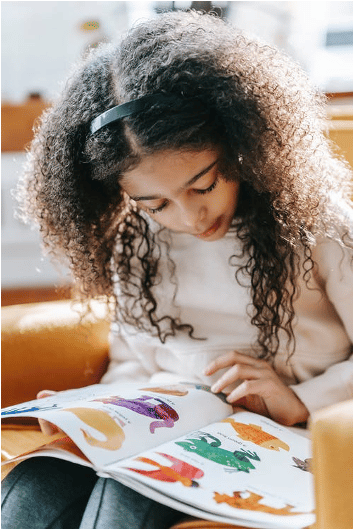How to Make Reading Fun for 1st Graders
If you’ve ever announced “reading time!” and received an audible groan in response, you know that 1st graders can be a tough crowd. Even as they gain reading skills and discover new books, students may feel overwhelmed by reading expectations in 1st grade, which many experts agree is a foundational year for reading success.
To reduce the pressure and maximize the fun, we’re focusing on reading activities for 1st graders that will make reading more enjoyable, exciting, and just as educational - both in the classroom and at home.

How To Make Reading More Fun
Before offering specific reading activities for 1st graders, it’s important to ask: why would a 1st grader not enjoy reading? As a parent or educator, you’ll learn that children develop distinct likes and dislikes from an early age - and inevitably, some 1st graders may like reading more than others. That said, if you have a first grade struggling reader who dislikes or even refuses to read, it’s worth considering the following possibilities:
- They aren’t interested in the format or topic of assigned books. If this rings true, try graphic novels, partnering with a librarian to identify your student’s interests, and reducing screen time. The fast-paced format of online games and social media can easily distract 1st graders from the slow - but rewarding - process of reading physical books.
- They haven’t developed foundational reading skills. 1st graders may start to experience reading difficulties that can slow the development of early reading skills. If you have concerns about reading disorders or even poor eyesight, communicating early with teachers and healthcare providers is essential to support your 1st grader’s skills and confidence.
- They haven’t found the right reading activities for 1st graders! In a traditional classroom, educators may not always adhere to a phonics-driven curriculum. Classrooms that still use elements of balanced literacy may inadvertently slow the acquisition of phonics skills, which can make reading much more difficult - and far less enjoyable - for a 1st grade student.
If you’re looking for reading activities for 1st graders that are science-based and fun, we’ve got you covered.

Reading Activities for 1st Graders
To make reading more fun for 1st graders, consider trying one (or all!) of these literacy activities that merge 1st-grade fun with the latest reading science.
- Allow students to choose their own books. Keeping the difficulty level in mind, it’s important to allow students to choose books that reflect their interests and expose them to new ideas and stories. Whether they choose nonfiction, fiction, graphic novels, or Shel Silverstein’s poetry, any reading counts.
- Start a book club. What 1st grader doesn’t love a club? This is one of our favorite reading activities for 1st graders, for a number of reasons:
- Everyone can participate! All you need is a book and a supportive adult.
- Students can read the same book at once OR read different books and come to “club meetings” with new suggestions for their peers.
- Clubs encourage fun discussions, storytelling, and group bonding.
- Read aloud. By using expressive voices and silly faces, adult readers can help characters and stories come alive for their 1st graders.
- Connect with bookstores and the local library! Many public libraries and local bookstores offer free storytimes and author visits. Libraries may also sponsor summer reading programs with prizes and summer reading activities for 1st graders.
- Foster opinions. If you start a 1st grade book club, you may discover that your readers have a lot of opinions. Encourage students to share their thoughts about a book after reading it: you can use a star-rating system or simply ask how they’d change the story if they were the author.

In conjunction with a phonics-based curriculum, these reading activities for 1st graders are intended to make reading fun, exciting, and rewarding. By supporting students’ reading interests and foundational skills, educators and parents can become more active participants in the 1st-grade reading journey.
Take-Aways:
- Many 1st graders struggle to find book formats and topics that interest them, and may face other reading challenges that detract from the joy of reading.
- To make reading more fun and student-centered, consider the following 1st grade reading activities:
- Empowering students to choose their own books
- Starting a 1st grade book club
- Reading aloud with expressive voices
- Attending events sponsored by local bookstores and libraries
- Encouraging students to freely express their opinions about books
Start Teaching Reading for Free Now!
Access Level 1’s four interactive stories and the accompanying supplemental resources to teach elementary students how to read. No credit card is needed. Join the 42,635 teachers and students using our reading program.



